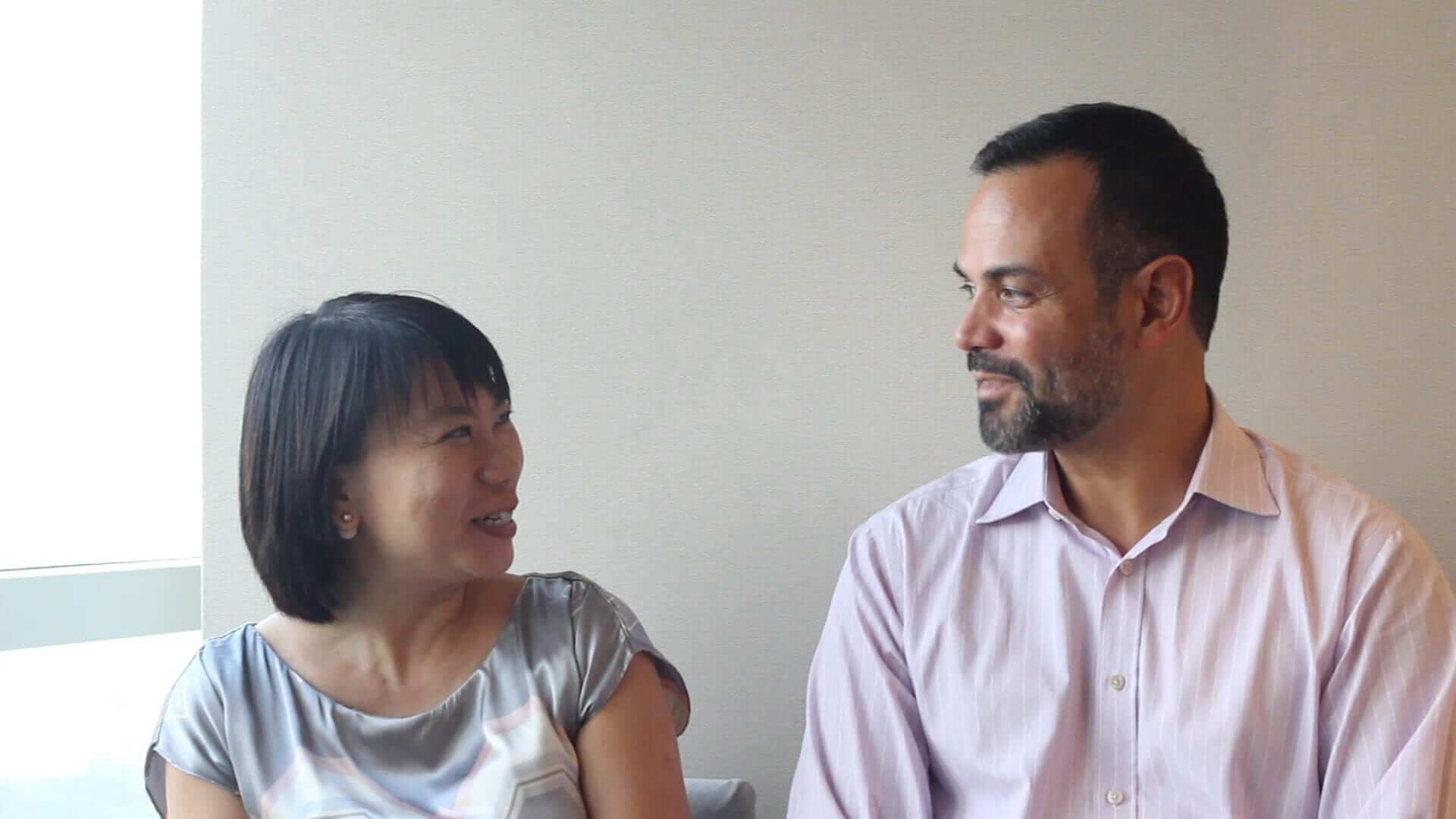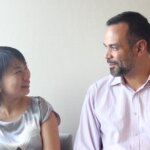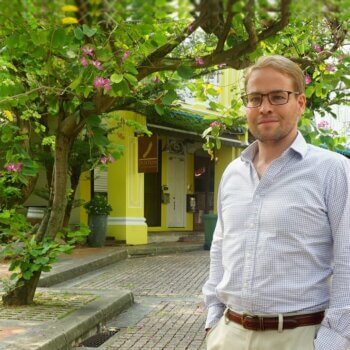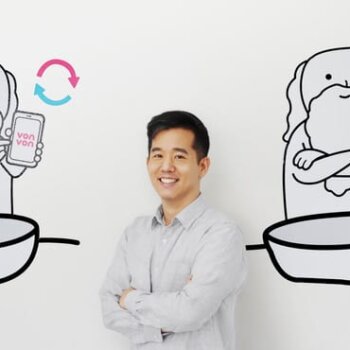(This is one in a series of articles and interviews about conscious business leadership, which is about leaders creating and promoting workplaces of understanding, honesty, and compassion, for the betterment of their employees, their community, their organization and world.)
I had an opportunity to meet with Rich Fernandez, founder of Wisdom Labs (https://wisdomlabs.com/).
Here is Part 2 of 2 of our discussion.
Mindfulness, mental habits, epigenetics, peak performing teams sound great. However, it is not that easy to achieve in companies. Can you share one or two success stories, most reluctant, most terrible leader, and somehow there was a change, or a team that changed for the good?
We do like to work with senior leaders because that’s really where a lot of culture gets created. That they can send the signals to the organizations about how to act and behave. For examples, so we were working with Ford Motor company, where we were working with their top 50 executives in North America. It was really an interesting journey to connect with Ford, and to think about when mindfulness is relevant to one of the world’s leading automakers.
But what we eventually arrived at was that for these leaders, activating the corporate strategies and priorities required collaboration across all of the different verticals, all of the different functions and lines of business to really collaborate in a seamless way. And that the leaders’ responsibility was to build those connections and collaborations. They call it One Ford.
That’s one of their corporate priorities. And so, with the practice of mindfulness, we are starting to now bring them together to have meaningful conversations with each other. And part of the tool set in mindfulness is that you have meaningful conversations in a non-reactive way, where you’re really able to take the perspective of your colleague.
Now, for senior leaders, this is critical, right? And so, taking the top 50 leaders in North America, we’re also launching, in just a couple of weeks, top 100 executives in Canada, will be going through the same process.
And allowing them to experience that with each other, and then allowing them to experience sort of the digital aspect of this, we are able to do webinars, we are able to give them a learning library that they can access on demand, Because they are busy executives, so having this live experience where they are able to connect with each other through the tools of mindfulness but then, also continue learning once they have left.
Mindfulness is being more present, being more aware of the person, and in Asia and in Singapore, we are Asia-Pac for a lot of things. A lot of teams are all remote. And you’re now telling us that you’re going to teach mindfulness online, or remote, or with webinars? How do you do that? How is it effective?
Actually, what we are offering is what we call the blended solution. So, in hub locations, it’s really often very useful to have a live experience because those are the ones where people really build relationships with each other, as well as with the instructors.
But that is insufficient to really scale to a globally or regionally distributed business such as you have here in APAC. And so, what’s really critical is a digital learning solution that’s scalable and accessible on demand. That communicates the same content that allows measure of interactivity through things like webinars and small pot groups or cohort, meetings, and allows the participants to engage in learning about mindfulness remotely.
And so, we are building a SAS-based solution, a Software As Service solution that companies can license on a per-employee basis to roll mindfulness tools out to distribute it to the workforce or a very large workforce, if they want to scale this type of thing.
But the thing is that it tracks very closely to some of the live training offerings that we have. So, we essentially offer experiential learning, for really impactful and transformative learning in person, and then that’s supported by digital solution set that includes a digital learning library of all the content that people experience live, plus additional content that includes things like research articles, apps, that also enable the quality of mindfulness for themselves.
We do like to recommend the blended solution though, because we believe in the power of experiential, we believe in the power of digital, and we think the combination of the two is a very powerful way to learn. And most importantly, it’s a way to learn that sustains itself over time because we ask employees or leaders who engage in digital learning to engage in it consistently overtime. So, several interactions over several quarters so they can really maintain consistency and sustain the mindfulness tools and practices that they learn, either live or through some of the seminars we have online.
And is it anytime that they gather together to do things together, even online?
Yes.
And do they meditate together, or do they sit in any practices together?
Yes, absolutely. So that’s what I was saying when we also have webinars, that, you know, our video conferences essentially that where we teach for limited periods of time. Then we also try to offer small group gatherings online, digitally, through Google Hangout and other technologies, where they can get the practices that they need. And then they can also, later, come back and watch recorded versions of that, as well as recorded versions of teachers’ trainings and content that’s all available.
So the question I would ask – it sounds very good, but why choose you?
First of all, we are really rooted in science and also in business life. So, many of us on the team have a long history of working in business, and then also, we are a team that comprises scientists, both neuroscientists, psychologists, medical practitioners and doctors. And what we’ve done is that we created the best content and aligned it to the business world. I have 15, no 17 years in the corporate world, working, again, as an executive in JPMorgan Chase and Google, and places like this. So, I understand what the complexities and realities are, and we’re able to then, connect the content to the reality that people are living and working in everyday.
And we are able to offer it in a format, I think, that is accessible and evidence-based. Also, I should mention, we offer assessment in the beginning, in the middle and at the end of all our learning solutions so we are able to measure impact and use those sources of data as analytics to track against other corporate measures of things like engagement, or turnover, or health and well-being, and all the relevant metrics.
We have data that we can use and tie in analytics and create dashboards in aggregated format to share with our clients so they can see, essentially, their index of corporate well-being for their population.
So, HR probably loves you!
HR, I also think the executives who are very interested in thinking about the culture that they are creating in their organizations.
So, let’s say I’m a busy, irritable, frantic team leader. And you tell me mindfulness, neuroscience, whatever helps me? How in the world will it help me?
It will absolutely – it’s a great application of mindfulness, which for busy, stressed-out professionals, in my experience will really help cultivate greater focus, greater ability to navigate stress, not to remove stress, because that’s never going to happen. I would lie to you if I said that was happening. But to navigate stressful situations with more skill, and to be able to be more resilient, which means adaptable with the ability to handle difficulties and even failures, and take that all the way back through to success.
Ultimately, what the benefit is is sustainable high performance. No matter what it is you are aspiring to achieve, what it is you are aspiring to create in your life, I believe that mindfulness is a core or foundational set of tools and capacities, internal skills to be able to navigate complexity, manage stress, and bring better resilience and effectiveness, no matter what it is you’re focusing in life or work.
Right, and so if I do it, and I teach it to my team, they may be able to do that with me?
Yes, I believe so. I mean I think the teaching of it can be a little bit involved. I mean it’s not necessarily an easy thing unless you have, you know, some fair expertise in being able to do that. However, the way to acquire that is to begin to adopt the tools oneself, to try them on consistently over time. It’s a skill. So like any skill, to develop it, it requires consistency and practice and application.
But with that, I do believe that it does translate directly not only to teams and peers and other colleagues and upward in the reporting structures, but also it has a great benefit of being a life skill. So it’s easily portable to home life as well. Great benefits for families, for example, where people can feel a little bit more connected to their loved ones and to their community because they are able to better manage stressful situations, better able to manage conflict and better be able to understand the perspectives of the people they care about.
For more information about Rich and Wisdom Labs, please see https://wisdomlabs.com/.































